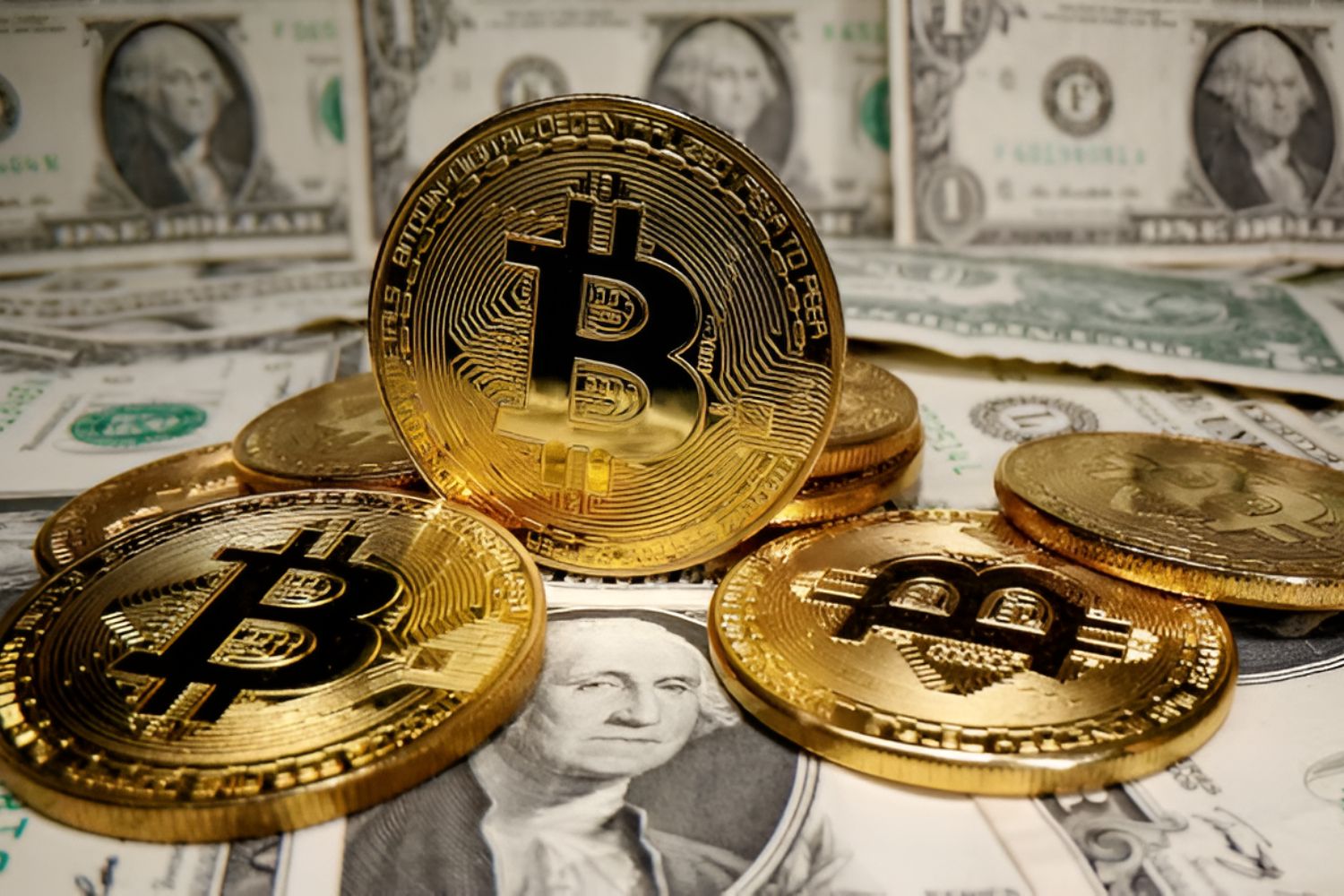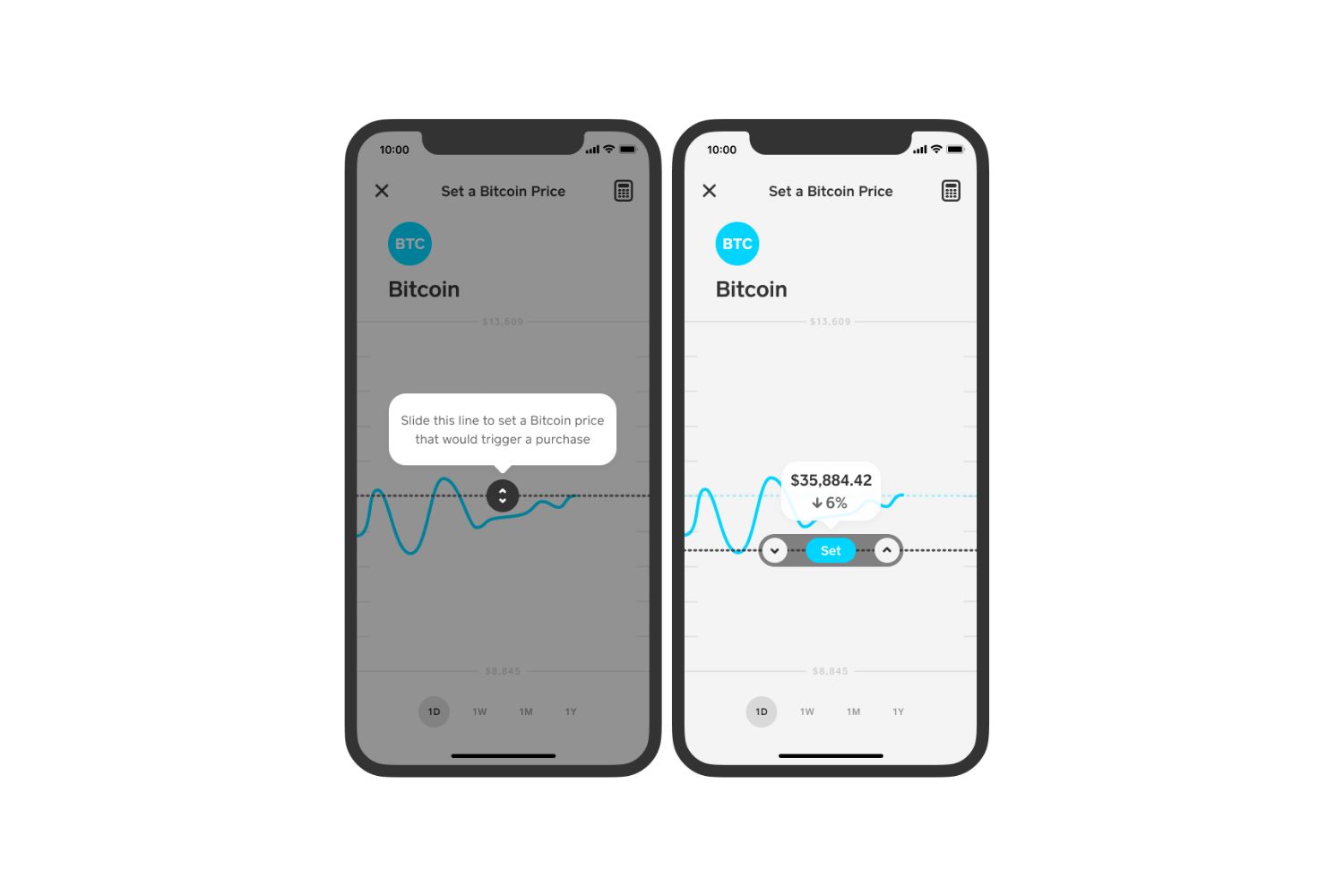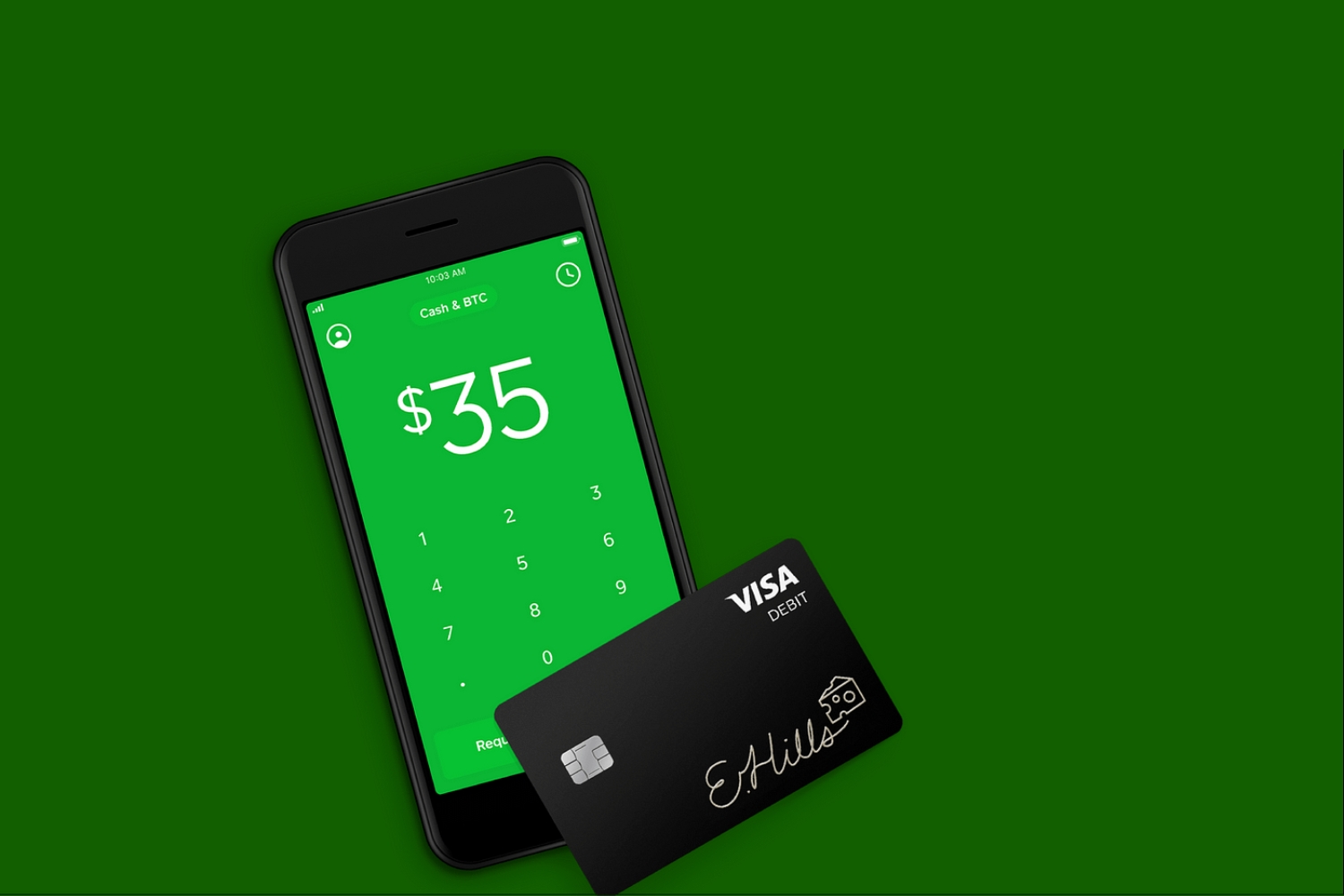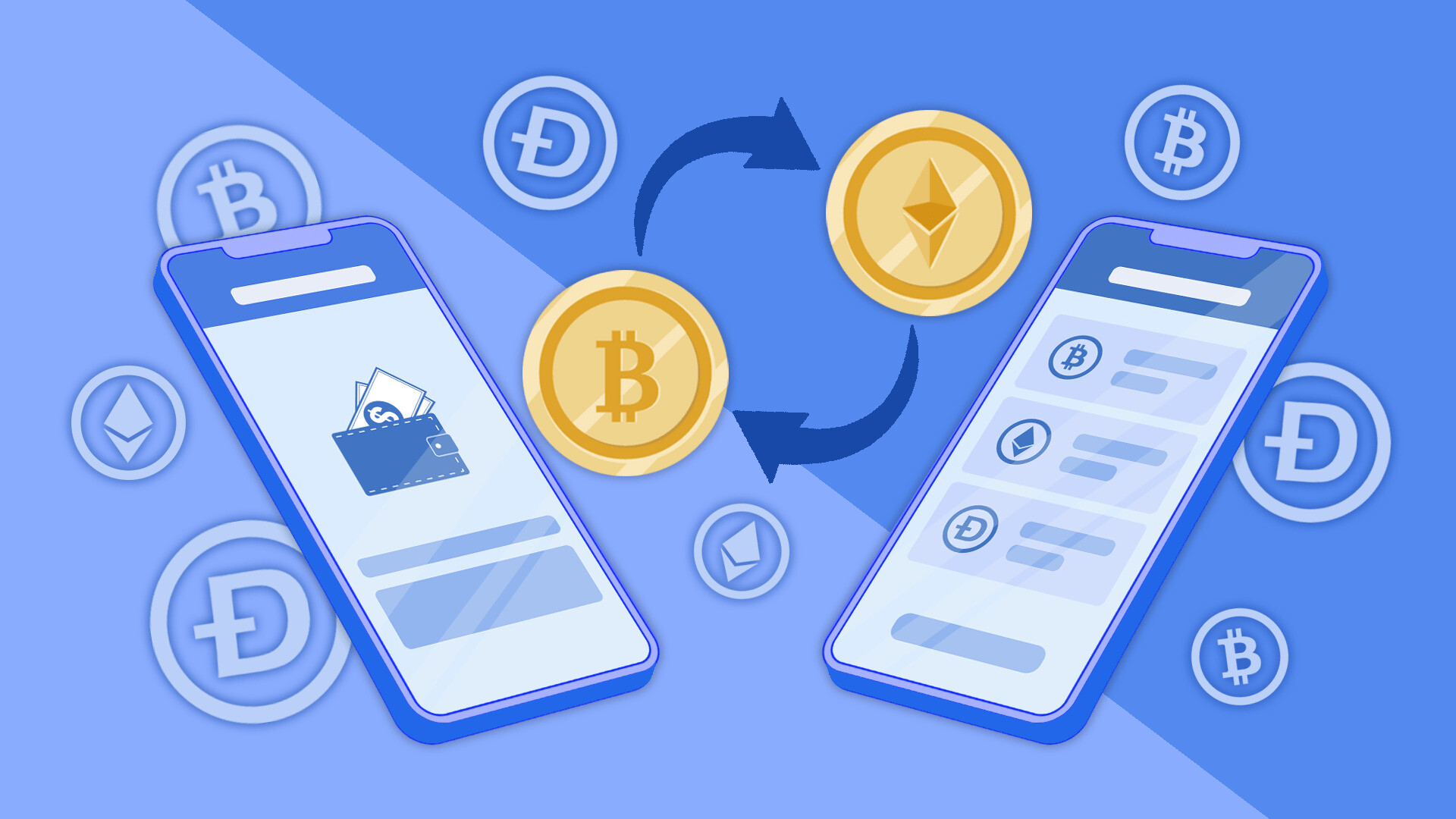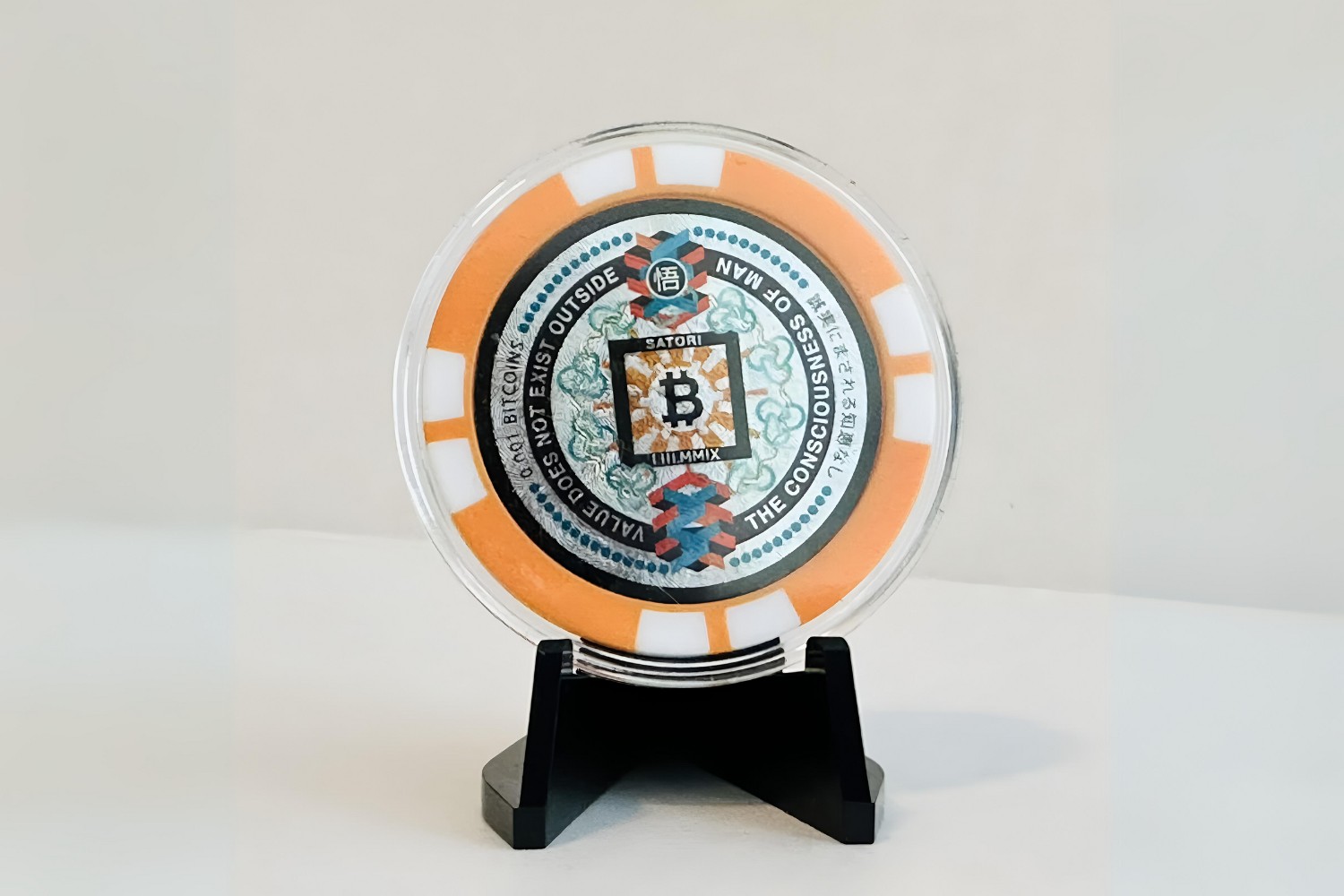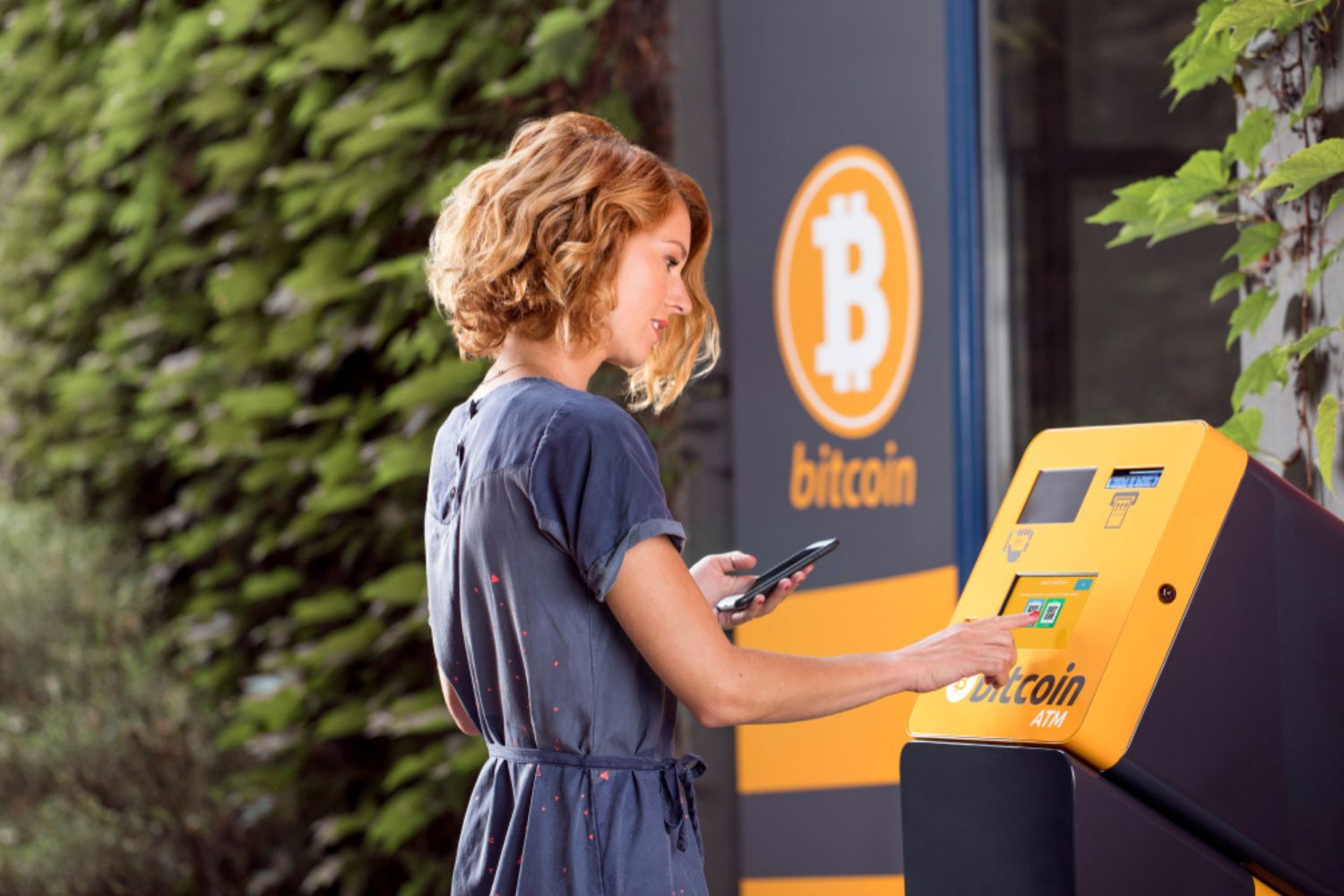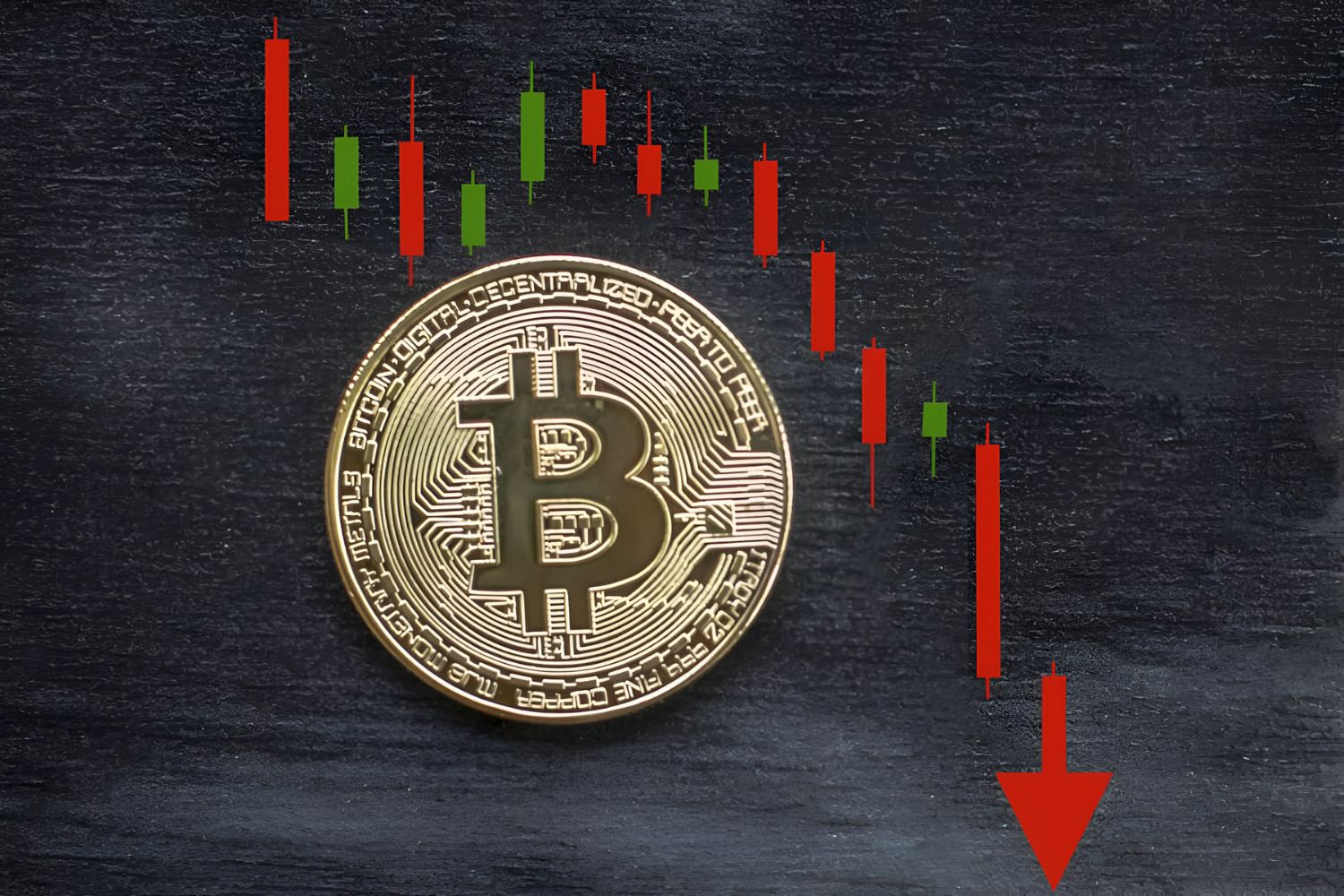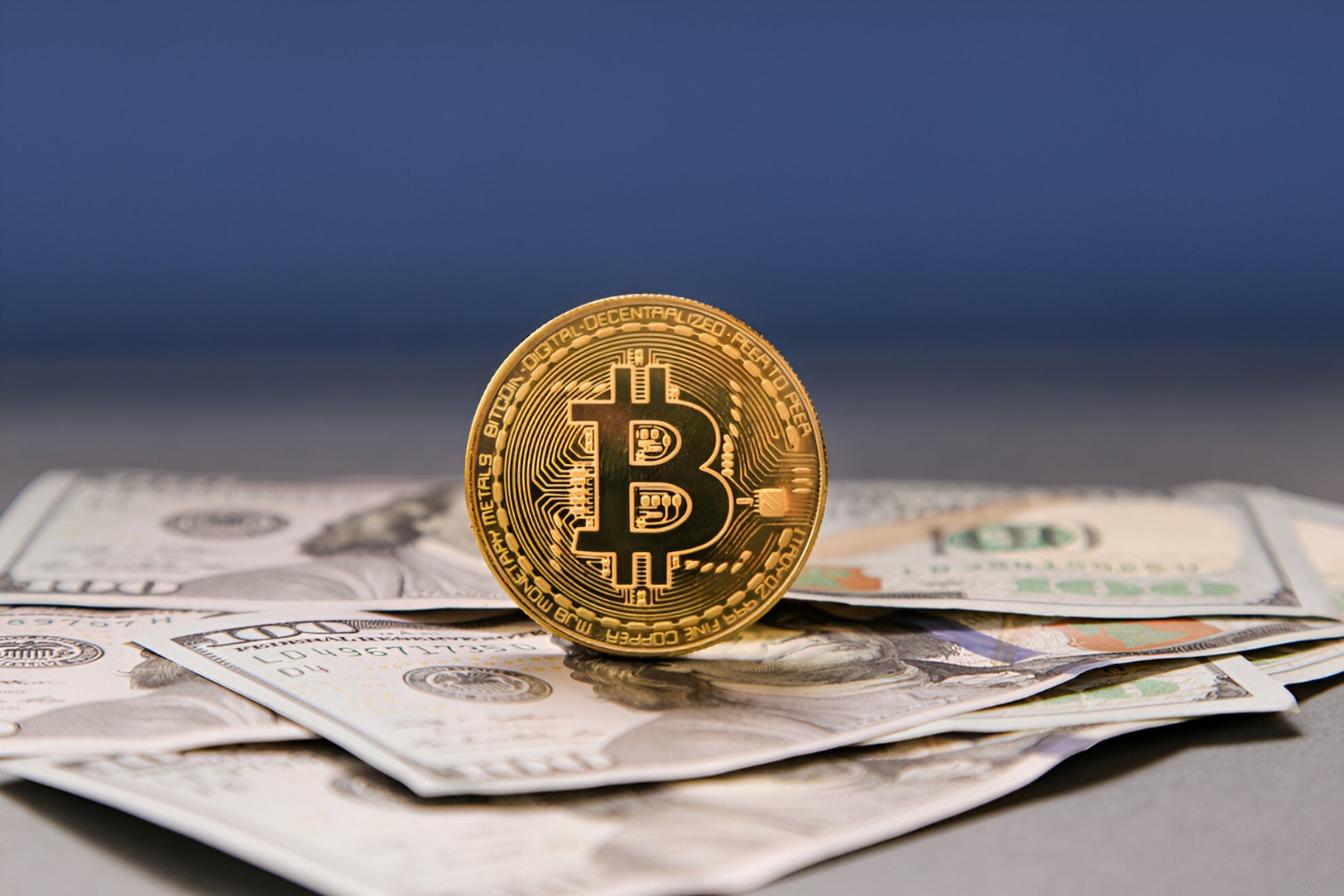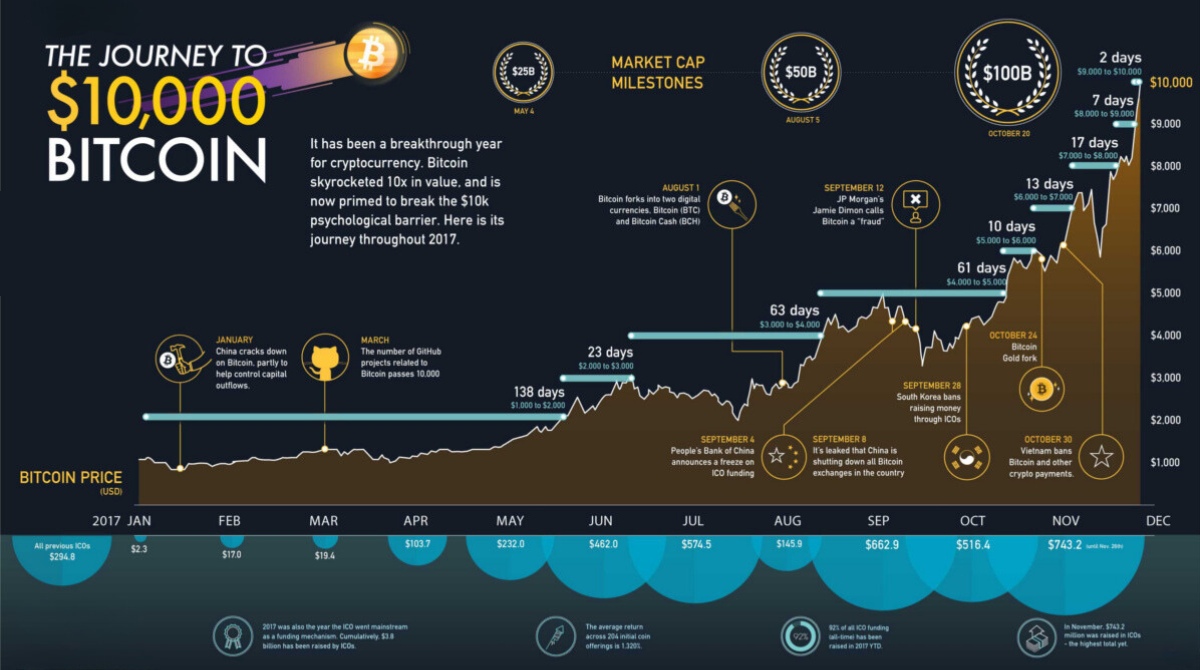Introduction
Welcome to the world of Bitcoin, the revolutionary digital currency that has taken the financial industry by storm. Whether you’re a tech-savvy investor, an online shopper, or simply curious about this new form of money, you may be wondering where you can buy and sell Bitcoin.
Bitcoin has gained immense popularity due to its decentralized nature, cutting-edge technology, and potential for significant returns on investment. It allows for secure and anonymous transactions, bypassing traditional banks and financial institutions. With Bitcoin, you have full control over your money, and transactions are processed quickly and efficiently.
But the question remains, where can you buy and sell Bitcoin? In this article, we will explore your options and provide insights into the various platforms and methods available to purchase and trade this digital asset.
Before we dive into the specifics, it’s worth noting that the Bitcoin market is highly volatile, and prices can fluctuate significantly. It’s essential to educate yourself and conduct thorough research before getting involved in buying or selling Bitcoin. Understanding the risks and potential rewards will help you make informed decisions.
So, let’s explore the different avenues for buying and selling Bitcoin and weigh the pros and cons of each option.
Why Buy and Sell Bitcoin?
Before we delve into where to buy and sell Bitcoin, let’s take a moment to understand the reasons why you might want to get involved in this digital currency.
1. Potential for Profit: Bitcoin has seen impressive growth since its inception, with some early adopters reaping massive profits. The price of Bitcoin has soared over the years, presenting opportunities for investors to make substantial returns. However, it’s important to remember that the market is volatile, and there are risks involved.
2. Diversification: One of the key advantages of Bitcoin is its ability to diversify an investment portfolio. Traditionally, investors relied on stocks, bonds, and real estate, but adding cryptocurrencies like Bitcoin can provide a layer of diversification, potentially reducing risk and increasing potential returns.
3. Access to Global Markets: Bitcoin transcends geographic borders, allowing individuals to participate in global financial markets. With Bitcoin, you can buy and sell assets, make cross-border payments, and engage in international trade, all without the need for intermediaries or costly currency conversions.
4. Financial Sovereignty: Bitcoin provides individuals with financial sovereignty, giving them complete control over their money. Traditional financial systems rely on banks and governments to manage transactions and enforce monetary policies. With Bitcoin, you are your own bank, with the power to transact and store wealth securely.
5. Anonymity and Privacy: Bitcoin transactions are pseudonymous, meaning they are not directly tied to the identity of the individuals involved. This offers a level of privacy that traditional financial systems lack. However, it’s worth noting that Bitcoin transactions are still recorded on the blockchain, a public ledger accessible to anyone.
6. Technological Advancements: Bitcoin is based on blockchain technology, which has opened up a world of possibilities beyond digital currency. The underlying blockchain technology has the potential to revolutionize industries such as finance, supply chain management, and healthcare.
These are just a few of the reasons why buying and selling Bitcoin may be appealing. However, it’s crucial to approach the market with caution and conduct thorough research to make informed decisions. With the potential for substantial profits comes the risk of volatility and uncertainty.
Where to Buy Bitcoin?
Now that you’re convinced about the potential benefits of buying Bitcoin, let’s explore the various platforms and methods available to purchase this digital currency.
1. Cryptocurrency Exchanges: Cryptocurrency exchanges are online platforms that facilitate the buying and selling of different cryptocurrencies, including Bitcoin. Some popular exchanges include Coinbase, Binance, and Kraken. These exchanges allow you to create an account, deposit funds, and trade cryptocurrencies. They often provide a user-friendly interface, advanced trading options, and secure storage for your digital assets.
2. Peer-to-Peer Marketplaces: Peer-to-peer (P2P) marketplaces connect buyers and sellers directly, eliminating the need for intermediaries. LocalBitcoins and Paxful are well-known P2P platforms that allow individuals to buy Bitcoin from others using various payment methods such as bank transfers, PayPal, or gift cards. These marketplaces provide a wider range of payment options and may offer better prices due to competition between sellers.
3. Bitcoin ATMs: Bitcoin ATMs are physical machines that allow you to purchase Bitcoin using cash or debit/credit cards. These ATMs work similarly to traditional ATMs but instead of dispensing cash, they transfer Bitcoin to your digital wallet. Bitcoin ATMs are becoming more prevalent and can be found in various locations worldwide. Coin ATM Radar is a useful website to locate Bitcoin ATMs near you.
When choosing a platform to buy Bitcoin, there are a few factors to consider:
– Security Measures: Look for exchanges or marketplaces with robust security measures, such as two-factor authentication (2FA) and cold storage for storing digital assets offline.
– Transaction Fees: Different platforms charge different fees for buying Bitcoin. Compare the fees across various platforms to ensure you’re getting the best deal.
– Regulation and Compliance: It’s essential to choose platforms that comply with relevant regulations and have a strong track record in the industry. This helps protect your funds and ensures a legitimate trading experience.
Remember to research and read user reviews about the platforms you’re interested in to ensure their reputation and trustworthiness.
In the next section, we will explore where to sell Bitcoin, giving you options to monetize your investment when the time comes.
Cryptocurrency Exchanges
When it comes to buying and selling Bitcoin, cryptocurrency exchanges are one of the most popular and convenient options available. These online platforms act as intermediaries, connecting buyers and sellers to facilitate the exchange of cryptocurrencies, including Bitcoin.
Some of the well-known cryptocurrency exchanges include Coinbase, Binance, Kraken, and Bitstamp. Each exchange has its own unique features, user interface, and supported cryptocurrencies, so it’s important to research and choose the one that best suits your needs.
Here’s how the process typically works:
1. Sign Up: To begin, you’ll need to create an account on the cryptocurrency exchange of your choice. This involves providing your email address, creating a password, and, in some cases, completing a verification process for added security.
2. Deposit Funds: Once your account is set up, you’ll need to deposit funds into your exchange wallet. This can be done by linking a bank account or using other accepted payment methods like credit/debit cards or digital payment platforms. Some exchanges may also support deposits in other cryptocurrencies.
3. Place an Order: After depositing funds, you can place an order to buy Bitcoin. You can specify the amount of Bitcoin you want to purchase and the price at which you’re willing to buy.
4. Transaction Execution: If your order matches with a seller’s offer, the transaction will be executed, and the Bitcoin will be credited to your exchange wallet. Some exchanges also offer the option to set up recurring purchases, allowing you to automatically buy Bitcoin at regular intervals.
5. Security Measures: It’s important to ensure that the cryptocurrency exchange you choose has robust security measures in place. Look for features such as two-factor authentication (2FA), cold storage, and encryption protocols to protect your funds from potential cyber threats and hacks.
6. Trading Fees: Cryptocurrency exchanges charge fees for facilitating transactions. These fees can vary depending on the exchange and the trading volume. It’s recommended to compare the fees across different exchanges to find the most cost-effective option.
It’s worth noting that cryptocurrency exchanges also offer other features such as advanced trading options, margin trading, and access to a wide range of altcoins (alternative cryptocurrencies). However, it’s essential to consider your level of expertise and risk tolerance before engaging in complex trading activities.
Overall, cryptocurrency exchanges provide a convenient and accessible way to buy and sell Bitcoin. They are particularly suitable for individuals looking to trade Bitcoin actively or invest in other cryptocurrencies. However, it’s important to research and choose reputable exchanges to ensure the security of your funds and a seamless trading experience.
Peer-to-Peer Marketplaces
If you’re looking for a more direct and decentralized approach to buying and selling Bitcoin, peer-to-peer (P2P) marketplaces offer an alternative to traditional cryptocurrency exchanges. These platforms connect individual buyers and sellers, allowing them to trade Bitcoin directly without the need for intermediaries.
Some well-known P2P marketplaces for Bitcoin include LocalBitcoins, Paxful, and Bisq. Here’s how P2P marketplaces typically work:
1. Sign Up: To get started on a P2P marketplace, you’ll need to create an account by providing necessary information like your email address and setting up a password. Some platforms may require additional identity verification steps to enhance security.
2. Search and Select Offers: Once your account is set up, you can browse through the available offers posted by sellers. These offers outline the amount of Bitcoin for sale, the price per Bitcoin, and the payment methods accepted.
3. Negotiate and Agree: If you find an offer that matches your requirements, you can initiate a trade by communicating with the seller directly on the platform. Here, you can negotiate the terms of the trade, including payment method, exchange rate, and any additional details.
4. Transaction Execution: Once both parties agree on the terms, the buyer will initiate the payment using the agreed-upon method, such as bank transfer, PayPal, or gift cards. The seller, upon verifying the payment, will release the Bitcoin to the buyer’s digital wallet.
5. Security Measures: Peer-to-peer marketplaces often have their own security measures in place to protect users. These may include reputation systems, escrow services, and dispute resolution mechanisms to ensure a smooth and secure trading experience.
6. Payment Methods: P2P marketplaces offer a wide variety of payment methods to accommodate users from different regions and preferences. However, it’s important to consider the reputation and trustworthiness of the seller and the security of the chosen payment method.
Peer-to-peer marketplaces offer several advantages, including a broader range of payment options, competitive prices, and increased privacy compared to traditional exchanges. Additionally, these platforms often allow users to buy Bitcoin with fiat currencies that may not be directly supported on exchanges.
However, it’s important to exercise caution when using P2P marketplaces, as they involve direct transactions with individuals. Be sure to thoroughly research and evaluate the reputation of the seller, read user reviews, and use secure payment methods to mitigate the risk of fraud.
Overall, peer-to-peer marketplaces provide a decentralized and flexible way to buy and sell Bitcoin. They are particularly suitable for individuals who prefer direct interactions and a wider choice of payment methods. However, diligence and careful consideration are essential to ensure safe and successful transactions.
Bitcoin ATMs
Bitcoin ATMs, also known as BTMs or Bitcoin kiosks, provide a physical and convenient way to buy and sell Bitcoin. These machines allow users to purchase Bitcoin using cash or debit/credit cards, making it accessible to individuals who prefer using traditional payment methods.
Bitcoin ATMs work in a similar manner to regular ATMs. Here’s a step-by-step guide on how to use them:
1. Locate a Bitcoin ATM: Use websites like Coin ATM Radar or apps specific to Bitcoin ATMs to find the nearest machine in your area. Bitcoin ATMs are becoming increasingly common and can be found in various locations such as malls, convenience stores, and restaurants.
2. Select Buy or Sell: Once you locate a Bitcoin ATM, determine whether you want to buy or sell Bitcoin. Some machines offer both options, while others may only allow one of the two.
3. Provide Identification and Wallet Address: Depending on the Bitcoin ATM’s requirements, you may need to provide identification, such as scanning your government-issued ID or verifying your phone number. Additionally, you’ll need to provide a Bitcoin wallet address, where the purchased or sold Bitcoin will be sent.
4. Follow the Instructions: Each Bitcoin ATM may have slightly different instructions, but in general, you’ll be guided through the process on-screen. This will involve selecting the desired amount of Bitcoin to buy or sell and choosing the payment method, usually cash or cards.
5. Transaction Confirmation: Once you’ve confirmed the transaction details, the Bitcoin ATM will process the transaction. Depending on network congestion, it may take some time for the transaction to be completed and the Bitcoin to be transferred to your wallet.
6. Keep Your Receipt: After completing the transaction, the Bitcoin ATM will provide you with a printed receipt. This receipt contains important information such as the transaction ID and the amount of Bitcoin bought or sold. It’s recommended to keep this receipt for your records and as proof of transaction.
Bitcoin ATMs provide a convenient option for those who prefer a physical and immediate way to buy or sell Bitcoin. They are particularly useful for individuals who don’t have access to traditional banking services or prefer to keep their transactions offline.
It’s important to note that Bitcoin ATMs may charge higher fees compared to online exchanges, mainly due to the convenience and additional costs associated with operating physical machines.
Before using a Bitcoin ATM, it’s advisable to research the specific machine’s fees, limits, and supported cryptocurrencies. Additionally, ensure that the machine is from a reputable provider and has proper security measures in place to protect your transactions.
Overall, Bitcoin ATMs offer a user-friendly and accessible option for buying and selling Bitcoin, catering to individuals who prefer cash transactions or prefer the convenience of a physical machine.
Where to Sell Bitcoin
So you’ve invested in Bitcoin and now it’s time to sell. Knowing where to sell your Bitcoin is just as important as knowing where to buy it. In this section, we will explore the various options available for selling your Bitcoin.
1. Cryptocurrency Exchanges: Just as you can buy Bitcoin on cryptocurrency exchanges, these platforms also allow you to sell it. Simply create an account on a reputable exchange such as Coinbase, Binance, or Kraken, transfer your Bitcoin to the exchange’s wallet, and place a sell order. Once the order is matched with a buyer, the transaction will be executed, and the funds will be deposited into your account.
2. Peer-to-Peer Marketplaces: Peer-to-peer marketplaces like LocalBitcoins and Paxful also provide options for selling your Bitcoin. You can create a sell offer, specifying the amount of Bitcoin you want to sell and the payment methods you accept. Interested buyers can then initiate a trade with you, and once the payment is confirmed, you can release the Bitcoin to the buyer.
3. Bitcoin ATMs: Some Bitcoin ATMs also allow for selling Bitcoin. The process is similar to buying Bitcoin but in reverse. You select the sell option, enter the amount you want to sell, and follow the prompts to complete the transaction. You will receive cash or have the funds deposited into your bank account or cryptocurrency wallet, depending on the machine’s capabilities.
When choosing where to sell your Bitcoin, consider the factors below:
– Exchange Rates: Different platforms may offer different exchange rates. It’s advisable to compare rates across multiple platforms to get the best value for your Bitcoin.
– Liquidity: Liquidity refers to the ease with which you can sell your Bitcoin. Some exchanges and marketplaces may have higher liquidity than others, meaning there are more buyers readily available to purchase your Bitcoin at a given price.
– Fees: Pay attention to the fees charged by the platform for selling Bitcoin. These fees can vary and may include transaction fees, withdrawal fees, or network fees. Calculate and compare the overall costs across different platforms to maximize your profits.
– Payment Methods: Consider the payment methods supported by the platform. Some platforms may have limited payment options, while others may offer a wider range to accommodate different preferences and regions.
Before selling your Bitcoin, it’s crucial to have a clear plan in mind. Set a target price or threshold at which you want to sell, and be mindful of market conditions and price fluctuations. Selling Bitcoin in smaller portions over time may help mitigate the impact of volatility.
Remember to prioritize security when selling Bitcoin. Use platforms with robust security measures, enable two-factor authentication (2FA) on your accounts, and consider using hardware wallets or cold storage for storing your Bitcoin.
Overall, there are several options available for selling your Bitcoin. Consider your preferences, liquidity needs, and security requirements when choosing the platform that best suits your selling goals.
Cryptocurrency Exchanges
Cryptocurrency exchanges are the most common and widely used platforms for buying and selling Bitcoin. These exchanges provide a convenient and user-friendly interface for individuals to trade various cryptocurrencies, including Bitcoin, in exchange for fiat currencies or other digital assets.
Some well-known cryptocurrency exchanges include Coinbase, Binance, Kraken, and Bitstamp. Here’s how using a cryptocurrency exchange typically works:
1. Sign-Up: To get started, you’ll need to create an account on the chosen cryptocurrency exchange. This usually involves providing your email address, creating a password, and completing any necessary identity verification processes.
2. Deposit Funds: Once your account is set up, you’ll need to deposit funds into your exchange wallet. This can be done by linking a bank account or using other accepted payment methods like credit/debit cards or digital payment platforms. Some exchanges also allow the deposit of cryptocurrencies.
3. Place an Order: With funds available in your exchange wallet, you can now place an order to buy or sell Bitcoin. You’ll specify the amount of Bitcoin you want to buy or sell and the price at which you’re willing to trade. The exchange will match your order with existing buy or sell offers from other users.
4. Transaction Execution: If your buy or sell offer matches with another user’s offer, the exchange will execute the transaction. Once completed, the Bitcoin will be transferred to your exchange wallet, or the fiat currency equivalent will be deposited into your account.
5. Security Measures: It’s crucial to choose a reputable exchange with robust security measures to ensure the safety of your funds. Look for exchanges that offer features like two-factor authentication (2FA), cold storage for offline storage of cryptocurrencies, and regular security audits.
6. Trading Fees: Cryptocurrency exchanges charge fees for facilitating transactions. These fees vary across exchanges and are typically based on the trading volume, with higher volume traders receiving lower fees. It’s recommended to compare the fees across different exchanges to find the most cost-effective option.
Cryptocurrency exchanges offer additional features such as advanced trading options, including limit orders, stop-loss orders, and margin trading. These options allow for more complex trading strategies for experienced investors.
While using cryptocurrency exchanges comes with various benefits, there are some considerations to keep in mind. It’s important to choose reputable and well-regulated exchanges to mitigate the risk of fraud and ensure the safety of your funds. Additionally, keep an eye on the liquidity of the exchange, as higher liquidity ensures easier and quicker trades at competitive prices.
In summary, cryptocurrency exchanges provide a convenient and accessible platform for buying and selling Bitcoin. They offer a range of features, competitive pricing, and a wide selection of cryptocurrencies to trade. When choosing an exchange, prioritize security, reputation, customer support, and trading fees to ensure a smooth and reliable trading experience.
Peer-to-Peer Marketplaces
If you prefer a more direct and decentralized approach to buying and selling Bitcoin, peer-to-peer (P2P) marketplaces offer an alternative to traditional cryptocurrency exchanges. P2P marketplaces connect individual buyers and sellers, allowing them to trade Bitcoin directly without the involvement of intermediaries.
Some well-known P2P marketplaces for Bitcoin include LocalBitcoins, Paxful, and Bisq. Here’s how using a peer-to-peer marketplace typically works:
1. Sign-Up: To get started, you’ll need to create an account on the chosen P2P marketplace. This generally entails providing your email address and setting up a password. Some platforms may require additional identity verification for security purposes.
2. Browse and Select Offers: Once your account is set up, you can browse through the available buy or sell offers posted by other users on the platform. These offers specify the amount of Bitcoin for sale, the price per Bitcoin, and the accepted payment methods.
3. Negotiate and Agree: If you find an offer that meets your requirements, you can initiate a trade by communicating directly with the seller on the platform. Here, you have the opportunity to negotiate the terms of the trade, including payment method, price, and any additional details.
4. Transaction Execution: Once both parties agree on the terms, the buyer will proceed with the payment using the chosen payment method. It could be a bank transfer, online payment, cash deposit, or other agreed-upon methods. After the payment is confirmed, the seller will release the Bitcoin to the buyer.
5. Security Measures: Peer-to-peer marketplaces typically have security measures in place to foster trust and protect users. These measures may include reputation systems, escrow services, or dispute resolution mechanisms to ensure smooth and secure trading experiences.
6. Payment Methods: P2P marketplaces offer a wide array of payment methods to accommodate users from different regions and preferences. It’s crucial to consider the reputation and reliability of the payment method as well as the seller before proceeding with a trade.
One of the advantages of using P2P marketplaces is the broader range of payment options available compared to traditional exchanges. They often support local payment methods, digital wallets, gift cards, and even cash transactions for greater convenience.
However, it’s essential to exercise caution when using P2P marketplaces, as they involve direct transactions with individuals. Make sure to thoroughly research and evaluate the reputation of the seller, read user reviews, and take appropriate security precautions.
Overall, peer-to-peer marketplaces provide a decentralized and flexible way to buy and sell Bitcoin. They are particularly suitable for individuals who prefer direct interactions, want to explore a wider choice of payment methods, or reside in regions with limited access to traditional banking services. Nevertheless, proper due diligence, including verifying the reputation and security measures of the platform and counterparty, is crucial for a safe and successful transaction.
Bitcoin ATMs
Bitcoin ATMs, also known as BTMs or Bitcoin kiosks, provide a physical and straightforward way to buy and sell Bitcoin. These machines allow users to perform Bitcoin transactions using cash or debit/credit cards, making it accessible to individuals who prefer using traditional payment methods.
Bitcoin ATMs work similarly to regular ATMs but with specific functionality for Bitcoin transactions. Here’s how using a Bitcoin ATM typically works:
1. Locate a Bitcoin ATM: Use websites like Coin ATM Radar or Bitcoin ATM Map to find the nearest Bitcoin ATM in your area. Bitcoin ATMs can be found in various locations such as shopping malls, convenience stores, or other public spaces.
2. Select Buy or Sell: Once you find a Bitcoin ATM, determine whether you want to buy or sell Bitcoin. Some machines may offer both options, while others may only allow one of the two.
3. Provide Identification and Wallet Address: Depending on the Bitcoin ATM’s requirements and local regulations, you may need to provide identification. This can typically be done by scanning your government-issued ID or verifying your phone number. You’ll also need to provide a Bitcoin wallet address where the purchased or sold Bitcoin will be sent.
4. Follow the On-Screen Instructions: Each Bitcoin ATM may have slightly different instructions, but in general, you’ll be guided through the process on-screen. This may involve selecting the desired amount of Bitcoin to buy or sell and confirming the transaction details.
5. Transaction Confirmation: Once all the necessary information is provided and the transaction is confirmed, the Bitcoin ATM will process the transaction. Depending on the network congestion and block confirmations required, it may take some time for the transaction to be completed.
6. Keep Your Receipt: After completing the transaction, the Bitcoin ATM will provide you with a printed receipt. This receipt contains important information such as the transaction ID, the amount of Bitcoin bought or sold, and any fees associated with the transaction. It’s advisable to keep this receipt for your records.
Bitcoin ATMs offer a convenient and immediate option for buying or selling Bitcoin, especially for those who prefer cash transactions. They provide a physical touchpoint for individuals who may not have access to traditional banking services or prefer offline transactions.
However, it’s essential to consider a few factors when using Bitcoin ATMs. These may include higher transaction fees compared to online exchanges, limited availability in certain regions, and potential liquidity constraints depending on the machine’s operator.
Additionally, be aware of the security risks associated with using Bitcoin ATMs. Ensure that the machine is from a reputable provider, located in a secure and well-lit area, and take necessary precautions such as covering your transaction inputs to protect your privacy.
In summary, Bitcoin ATMs offer a user-friendly and accessible option for buying and selling Bitcoin. They cater to individuals who prefer cash transactions or value the convenience of a physical machine. Ensure to research Bitcoin ATM locations, transaction fees, and security measures to make informed decisions when using these machines.
Things to Consider Before Buying or Selling Bitcoin
Before you dive into buying or selling Bitcoin, it’s important to consider a few factors that can greatly impact your experience and outcomes. Understanding these considerations will help you make informed decisions and navigate the volatile world of cryptocurrencies more effectively.
1. Security Measures: Cryptocurrency transactions involve risks, so it’s crucial to prioritize security. Use reputable platforms with robust security measures, such as two-factor authentication (2FA), encryption, and secure storage options like hardware wallets. Be cautious of phishing attempts and only interact with verified sources.
2. Transaction Fees: Various platforms charge different fees for buying or selling Bitcoin. These fees can greatly impact your overall investment return or the price you receive when selling. Compare fees across different platforms to find the most cost-effective option. However, keep in mind that lower fees may come with compromises on security or service quality.
3. Regulation and Compliance: Cryptocurrencies operate in a rapidly evolving regulatory landscape. Keep yourself informed about the legal and tax implications of buying and selling Bitcoin in your jurisdiction. Understand the financial reporting requirements and tax obligations to ensure compliance with local laws.
4. Market Volatility: Bitcoin is notorious for its price volatility. Prices can fluctuate drastically in short periods of time, leading to significant gains or losses. It’s important to have a long-term perspective and consider your risk tolerance before buying or selling Bitcoin. Investing only what you can afford to lose is a prudent approach.
5. Research and Education: Before venturing into buying or selling Bitcoin, take the time to educate yourself. Understand the underlying technology, the fundamentals of Bitcoin, and the factors that can influence its price. Stay up to date with the latest news, market trends, and regulatory developments to make informed decisions.
6. Liquidity: Liquidity refers to the ease with which an asset can be bought or sold without causing significant price fluctuations. Consider the liquidity of the platform or marketplace you choose. Higher liquidity means greater availability of buyers or sellers, allowing for smoother and quicker transactions.
7. Long-Term Goals: Consider your long-term goals and investment strategy when buying or selling Bitcoin. Are you looking for short-term gains or do you believe in the long-term potential of cryptocurrencies? Understanding your objectives will help you make more strategic decisions and avoid impulsive actions based on short-term market trends.
8. Technical Understanding: While not required, having a basic understanding of the technical aspects of Bitcoin and blockchain technology can be beneficial. Familiarize yourself with concepts like blockchain, mining, wallets, and digital signatures. This knowledge can help you better assess the security of platforms, understand transaction processing, and make informed decisions.
By considering these factors before buying or selling Bitcoin, you can navigate the cryptocurrency landscape with greater confidence and mitigate potential risks. Remember that the cryptocurrency market is highly volatile and not suitable for everyone. Taking a cautious and informed approach is key to making sound investment decisions.
Security Measures
When it comes to buying or selling Bitcoin, prioritizing security is of utmost importance. The decentralized and digital nature of cryptocurrencies means there are unique risks associated with storing and transferring them. To ensure the safety of your Bitcoin transactions, consider implementing the following security measures:
1. Choose a Reputable Platform: When selecting a platform or exchange to buy or sell Bitcoin, opt for reputable and well-established providers. Research their track record, customer reviews, and security practices. Look for exchanges that have implemented comprehensive security measures and have a strong reputation in the industry.
2. Two-Factor Authentication (2FA): Enable two-factor authentication on all your cryptocurrency-related accounts. 2FA adds an extra layer of security by requiring you to provide a second verification factor, typically a code generated by a mobile app, in addition to your username and password. This reduces the risk of unauthorized access to your accounts.
3. Secure Wallets: Use a secure digital wallet to store your Bitcoin. Wallets can be categorized into two types: hot wallets and cold wallets. Hot wallets are connected to the internet and are convenient for frequent transactions, while cold wallets are offline and offer better protection against hacking attempts. Consider using hardware wallets, which provide an extra level of security by storing your private keys offline.
4. Regular Software Updates: Keep your operating system and all cryptocurrency-related software up to date. Install the latest security patches and updates to protect against known vulnerabilities. Outdated software can expose your wallet or exchange account to hackers and other security risks.
5. Backup Your Wallet: Make sure to regularly back up your wallet’s private keys or recovery phrase. Store these backups in secure locations, such as encrypted external hard drives or offline storage devices. This will help protect your Bitcoin in case of hardware failure, loss, or theft.
6. Beware of Phishing Attempts: Be cautious of phishing attempts, where criminals trick users into revealing their login credentials or private keys through deceptive websites or emails. Always double-check the URL of the websites you visit, and avoid clicking on suspicious links or providing sensitive information to unverified sources.
7. Diversify Your Storage: Consider diversifying your Bitcoin storage across different wallets and platforms. This practice can help mitigate the risk of losing all your Bitcoin in the event of a security breach or failure of a single platform. Spread your investments across multiple wallets and exchanges that have proven their security measures.
8. Education and Vigilance: Stay informed about the latest security threats and best practices in cryptocurrency security. Educate yourself about common attack vectors and how to recognize and prevent them. Regularly review your accounts and transactions for any suspicious activity and report any concerns to the respective platform.
By implementing these security measures, you can significantly enhance the safety of your Bitcoin transactions. However, remember that no security measure is foolproof. Stay vigilant, continuously assess the security landscape, and adapt your practices accordingly to ensure the protection of your Bitcoin investments.
Transaction Fees
Transaction fees are an essential consideration when buying or selling Bitcoin. These fees are charged by platforms or networks to process and validate transactions on the blockchain. Understanding transaction fees is crucial as they can vary significantly depending on the platform, transaction size, network congestion, and other factors. Here’s what you need to know about transaction fees:
1. Platform Fees: Different cryptocurrency exchanges and peer-to-peer marketplaces have their fee structures. These fees can be calculated as a percentage of the transaction amount or a fixed fee per transaction. It’s important to compare fees among different platforms to ensure you’re getting a competitive rate. Keep in mind that platforms offering lower fees may compromise on other aspects such as security, liquidity, or customer support.
2. Network Fees: In addition to platform fees, Bitcoin transactions also incur network fees known as miner fees. These fees are paid to incentivize miners to include transactions in a block and secure the Bitcoin network. The network fee varies depending on the current network congestion and transaction size (measured in bytes). When the network is busy, transaction fees tend to be higher to prioritize faster confirmation times.
3. Fee Estimation: To determine the appropriate network fee for your Bitcoin transaction, it’s essential to use a fee estimation tool. These tools provide an estimate of the fee required to have your transaction confirmed within a specific timeframe. Keep in mind that higher fees may result in faster confirmation, while lower fees may cause delays.
4. Transaction Size: Bitcoin transaction fees are influenced by the size of the transaction in bytes, not the amount of Bitcoin being transferred. Transactions with multiple inputs or outputs, or those that include complex scripting, require more space on the blockchain, resulting in higher fees. Simplifying your transactions, whenever possible, can help reduce fees.
5. SegWit and Layer 2 Solutions: Segregated Witness (SegWit) is a solution implemented in the Bitcoin network that improves transaction efficiency and reduces fees. By utilizing SegWit-enabled wallets and addresses, you can benefit from lower fees compared to legacy Bitcoin addresses. Additionally, Layer 2 solutions, such as the Lightning Network, provide faster and cheaper off-chain transactions for smaller values.
6. Fee Optimization: To optimize fees, consider adjusting the transaction fee according to your urgency. If time is not a critical factor, you can choose a lower fee and wait for the transaction to be confirmed during periods of lower network congestion. On the other hand, for time-sensitive transactions, like when market conditions are rapidly changing, it may be worth paying higher fees to ensure faster confirmation.
7. Fee-Reducing Techniques: Various fee-reducing techniques can help minimize transaction costs. These include batching multiple transactions into a single transaction, consolidating smaller inputs into larger ones, and utilizing transaction accelerators during periods of high network congestion.
Understanding transaction fees and optimizing them can help you save on costs when buying or selling Bitcoin. However, it’s crucial to strike a balance between fees and transaction speed. Selecting a fee that is too low may result in a delayed confirmation, while an unnecessarily high fee can inflate your transaction costs. Regularly assess the fee landscape, consider the urgency of your transactions, and utilize tools and techniques to optimize fees based on your specific needs.
Regulation and Compliance
When buying or selling Bitcoin, it’s crucial to understand the regulatory and compliance landscape surrounding cryptocurrencies. Governments and financial institutions worldwide are developing frameworks to address the unique challenges posed by digital currencies. Consider the following aspects of regulation and compliance:
1. Legal Status: Bitcoin’s legal status varies from country to country. While some nations embrace cryptocurrencies and have clear regulations in place, others may have stricter or more ambiguous policies. Research and understand the legal status of Bitcoin in your jurisdiction to ensure compliance with local laws.
2. Reporting Obligations: Governments may require individuals or businesses who buy or sell Bitcoin to report their transactions for tax purposes. Understand the reporting obligations in your country, including the need to disclose profits, losses, or capital gains. Keep accurate records of your transactions to facilitate compliance with tax regulations.
3. Know Your Customer (KYC) and Anti-Money Laundering (AML) Compliance: Cryptocurrency exchanges and some peer-to-peer marketplaces often have Know Your Customer (KYC) policies in place to verify the identity of their users. KYC measures, such as providing identification documents or proof of residence, help prevent fraudulent activities and ensure compliance with anti-money laundering (AML) laws.
4. Licensing and Registration: In some jurisdictions, operating a cryptocurrency exchange or digital asset business may require obtaining specific licenses or registrations. Stay informed about the licensing requirements applicable to platforms you plan to use to ensure they meet regulatory standards and provide legally compliant services.
5. Customer Protections: Regulatory frameworks aim to protect consumers in the cryptocurrency space. These protections may include safeguards against fraud, measures to ensure the security of user funds, and dispute resolution mechanisms. Consider platforms that prioritize customer protection and adhere to best practices in security and transparency.
6. International Compliance: If you plan to engage in cross-border transactions or interact with platforms outside your jurisdiction, familiarize yourself with international regulations. Understand how different countries approach cryptocurrency transactions and whether there are restrictions, licensing requirements, or tax implications for global transactions.
7. Ongoing Regulatory Developments: Cryptocurrency regulation is an evolving landscape. Stay updated on regulatory developments, news, and announcements that may impact the buying and selling of Bitcoin. Changes in regulations can affect the legality, cost, and ease of transacting with cryptocurrencies.
8. Legal Advice: Consult with a knowledgeable legal professional with expertise in cryptocurrency regulation. They can provide guidance specific to your jurisdiction, help you understand the legal implications, and ensure compliance with local regulations when buying or selling Bitcoin.
Complying with regulations not only helps ensure that your activities are legal, but it also contributes to the overall legitimacy and acceptance of cryptocurrencies. It enhances consumer protection, reduces risks associated with fraud and money laundering, and fosters the growth and mainstream adoption of digital assets.
Always stay informed about the regulatory environment and seek professional advice when needed to navigate the complex landscape of cryptocurrency regulations effectively.
Conclusion
Buying and selling Bitcoin gives you access to a dynamic and exciting digital asset that has the potential for significant returns. However, it’s essential to approach the process with careful consideration and awareness of the various options and factors at play.
By exploring the different avenues available, such as cryptocurrency exchanges, peer-to-peer marketplaces, and Bitcoin ATMs, you can find the platform that best suits your needs and preferences. Consider factors like security measures, transaction fees, regulatory compliance, and liquidity to make informed decisions.
When buying or selling Bitcoin, always prioritize security measures such as using reputable platforms, enabling two-factor authentication, and utilizing secure wallets. Stay informed about the regulatory and compliance aspects relevant to your jurisdiction to ensure compliance with local laws.
Remember that the cryptocurrency market, including Bitcoin, is highly volatile, and prices can fluctuate dramatically. It’s crucial to approach your investments with a long-term perspective, conduct thorough research, and diversify your portfolio to manage risk effectively.
Whether you’re buying Bitcoin as an investment, for technological intrigue, or to transact in a decentralized manner, educate yourself about the technology and the market. Stay updated on the latest news, market trends, and regulatory developments to make informed decisions.
Lastly, as with any financial venture, invest only what you can afford to lose. The world of Bitcoin offers exciting opportunities but also carries inherent risks.
With careful consideration of the options, risk management, and adherence to security and regulatory measures, buying and selling Bitcoin can be a rewarding experience. Enjoy the journey and embrace the possibilities that this innovative digital currency brings.







